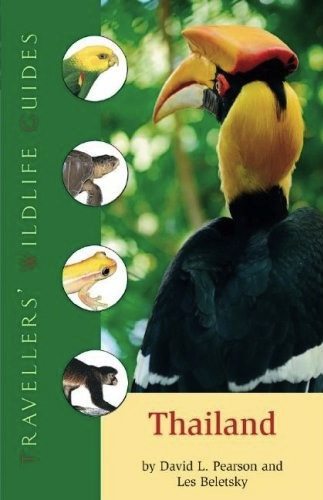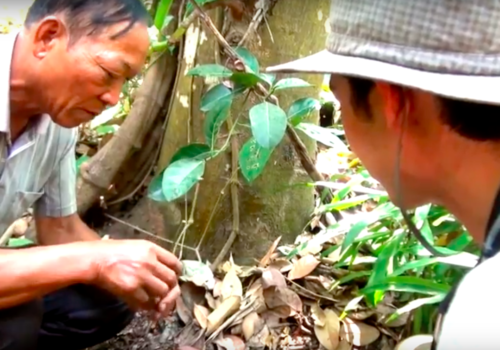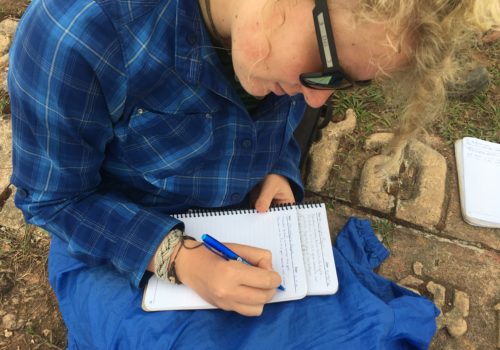
This semester we are giving each student a new book: Thailand: Travellers’ Wildlife Guide.
This is a great resource with all the most important birds, mammals, reef fish, reptiles, insects and other wildlife. We’ve been looking for something like this for a long time, and even has a good variety of insects. Lots of information on the ecology of Thailand, as well as specific habitat, etc.
From the publisher:
Thailand holds a special place in the minds of the world’s nature-lovers as a paradise of splendid tropical forests, untrammeled ocean beaches, and spectacular underwater coral grottos. Nature travellers to Thailand want to experience these stunning habitats and catch glimpses of exotic wildlife-gibbons and elephants, hornbills and storks, gliding lizards and cobras, brightly colored reef fishes and marine invertebrates. In this book is all the information you need to find, identify, and learn about Thailand’s magnificent animal and plant life.
- Identifying and location information on the most frequently seen animals.
- Full-color illustrations of nearly 600 of Thailand’s most common insects, amphibians, reptiles, birds, mammals, and coral fish.
- Up-to-date information on the ecology, behavior, and conservation of the animals.
- Information on Thailand’s habitats and on the most common plants you will encounter.
Brief descriptions of Thailand’s most frequently visited parks and reserves.
Easy-to-carry, entertainingly written, beautifully illustrated – you will want to have this book as constant companion on your journey.
About the Authors
David L. Pearson is a research professor in the School of Life Sciences at Arizona State University. He is co-author of The New Key to Ecuador and the Galapagos and of Ecuador in this series.
Les Beletsky is a professional wildlife biologist and former university zoology teacher. Prior to taking up writing wildlife guides, he conducted many years of field research into the ecology and behavior of birds. He is the author of numerous books, including Costa Rica, Ecuador, and Peru in this series.
Even if you’re not in Thailand, this is a good introduction to the ecology and wildlife of Thailand. Highly recommended!
That said, from our research and experience we feel that the information on farming in the tropics and human impact presents a unsophisticated understanding of the complex ethno-ecological relationships in Thailand and Southeast Asia. That isn’t the focus of the book, however, so it is still a valuable resource on the wildlife.
We’ve found a few errors (not unusual in a book of this size and complexity). We’ll update this list as we find more.
Errata:
p. 19: The metric conversion for fan palm is incorrect. They list “3 m, 30 ft, tall” and 3 m and 30 ft are not the same, so one is wrong.
p. 35: The labels for breadfruit and jackfruit are switched.
p. 382: The information on behavior, habitat and numbers on dugong is incorrect. The Phuket Marine Biological Institute estimates from aerial surveys that there are between 100 and 130 individuals, not “40”. Dugongs are mostly observed in the sea grass beds off of Muk and Libong Islands, not “the mouth of the Trang river”. Dugong do not feed on “green algae and other seaweeds, usually in areas of rocky outcroppings.” Dugong feed on sea grasses in large sea grass beds off the islands (sea grass is a true vascular plant, not a form of algae). Finally, dugongs do not “rest by day in deep water; by night, feeds underwater in shallow coastal waters.” They do rest in deep water, but dugong feeding is based on the tides, not the sun. They come in to feed on sea grasses during high tides, and retreat to deep water to rest at low tide. For more on dugongs, see Dugong: Status Report and Action Plans for Countries and Territories by UNEP, or Wikipedia, http://en.wikipedia.org/wiki/Dugong.
Here’s the link to Amazon.
(Thanks to Binney and Tim from Kalamazoo College for spotting it on Amazon and showing us a copy!)



